You might have noticed that I had quite a number of Wi-Fi related posts lately. In the process, I have discovered a number of new Linux command line tools to find out more about the capabilities of the Wi-Fi network adapter in a device, the capabilities of the Access Point my device is connected to, and about the capabilities of all other Access Points in the area. So here’s a cheat sheet with a summary of those commands:
Continue reading Wi-Fi Exploration ToolsA New Kernel for Suspend to RAM – Will It Help?
In the previous post I’ve had a look the differences between Suspend to Idle and Suspend to RAM when the lid is closed. While Ubuntu 20.04 runs great on the 650 euro consumer grade notebook I bought a few weeks ago with the latest 11th generation Intel i5 processor, the Linux kernel would not support the much more power efficient Suspend to RAM and opted to go for Suspend to Idle instead. That suits me just fine for the purpose, but just for the fun of it, I was wondering if there is a way to get Suspend to RAM to work after all.
Continue reading A New Kernel for Suspend to RAM – Will It Help?Linux – Suspend to Idle or to RAM?
In a recent post, I was quite happy to report that by and large, I had no big issue running Ubuntu 20.04 with a Linux 5.11 kernel on the latest notebook hardware in 2021 with an 11th generation Intel i5 processor. Everything except the cheap Wi-Fi card ran out of the box and there’s a fix for that Wi-Fi as well. In addition, suspend/resume worked out of the box as well, which was one of my biggest worries. A week or so later, I noticed, however, that when I unplug the computer while suspended, the battery would drain very quickly and is empty after half a day. Hm, could the power efficiency of the suspend mode be so bad on that platform?
Continue reading Linux – Suspend to Idle or to RAM?Upgrading the Wi-Fi in that Notebook
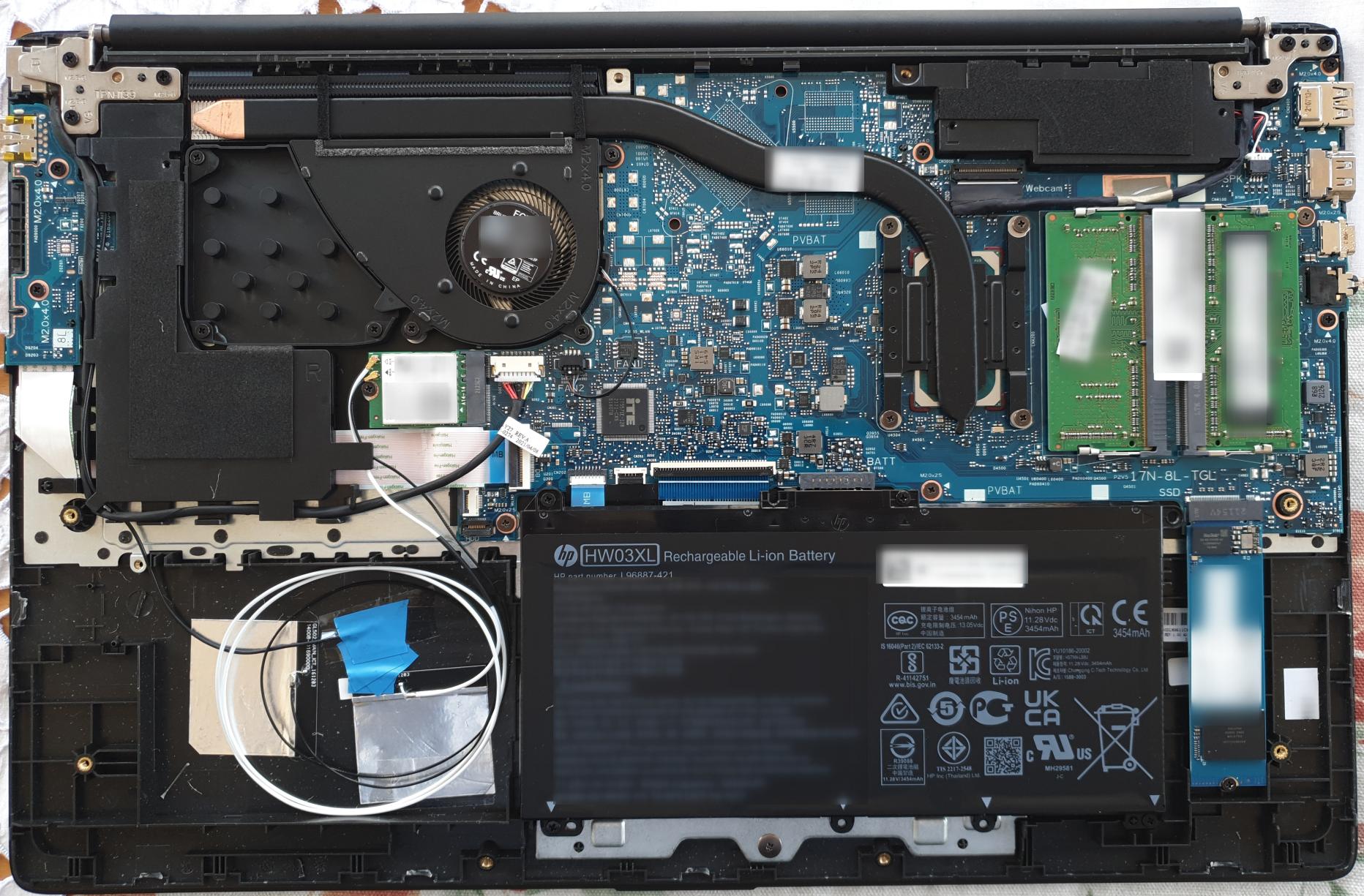
In the previous post I’ve been describing my experiences running Ubuntu on a brand new notebook with the latest hardware. I was quite happy with the result, except for the bad Linux driver support of Realtek for their entry level 802.11ac RTL8221CE chip that only supports a single RF chain. So I had to do something about that.
Continue reading Upgrading the Wi-Fi in that NotebookRunning Ubuntu Linux on the Latest Hardware
After my very good experience with running Ubuntu 20.04 on almost the latest hardware, I decided to be even more adventurous, and go for a mid-range notebook with pretty much the latest hardware, i.e. with an 11th generation Intel i5 CPU. So here’s how that went.
Continue reading Running Ubuntu Linux on the Latest HardwareThe Current State of Mobile Charging: One Charger for Notebook and Phone
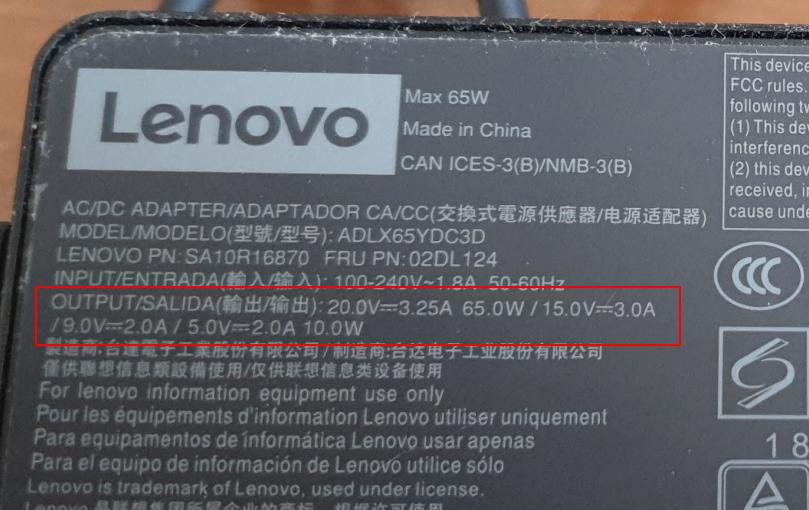
After leapfrogging a couple of generations of notebooks, I recently bought a new notebook for daily use that is charged over a USB-C port and USB Power delivery. By now, the USB standard must the the most complicated interface standard imaginable, but I have to say it does its job well for me, because all chargers and spare batteries I now take with me can pretty much charge any device I have with me.
Continue reading The Current State of Mobile Charging: One Charger for Notebook and PhoneFfmpeg Comparison – From Nvidia to Raspberry Pi 4
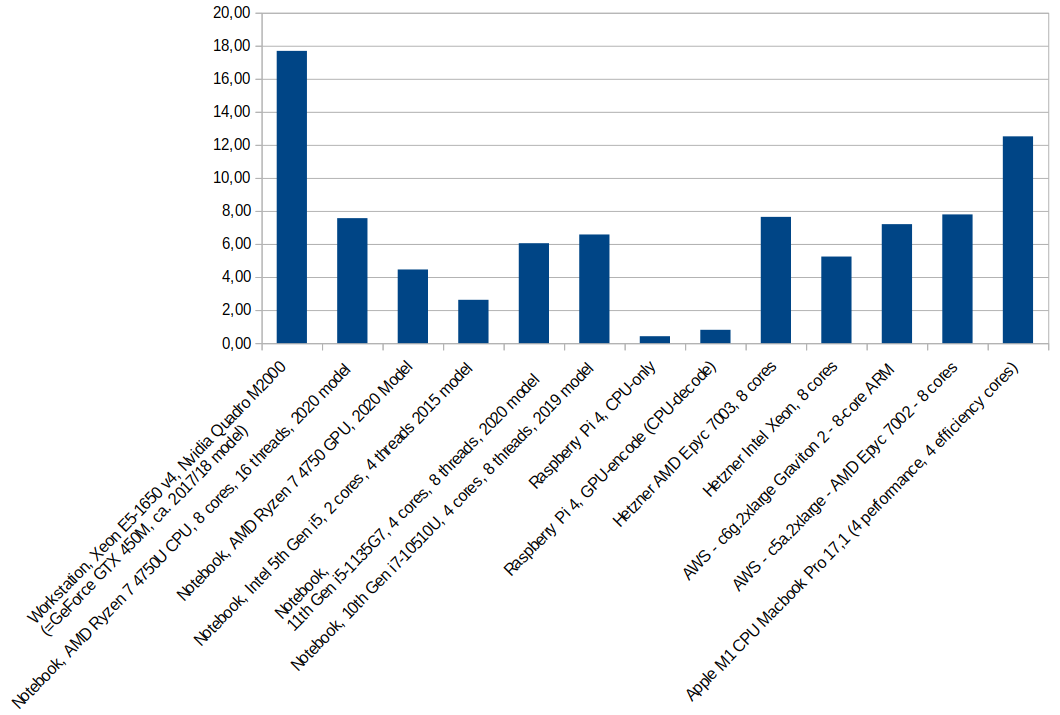
Last year I post-processed videos from the Vintage Computing Festival 2020 on my rather old notebook and was quite underwhelmed by the time it took. Even VMs in the cloud did not significantly speed up the process. This year I’ve had a workstation with an Nvidia graphics card and hardware H264 encoding for the purpose and I’ve also upgraded to a much faster notebook. And indeed, post-processing was a lot faster than last year and I ran a comprehensive ffmpeg speed comparison on a lot of devices at my disposal this year. The result is shown in the bar graph above and here are some thoughts on what the different results mean in relation to each other:
Continue reading Ffmpeg Comparison – From Nvidia to Raspberry Pi 4Driverless USB and HDMI Travel Screen
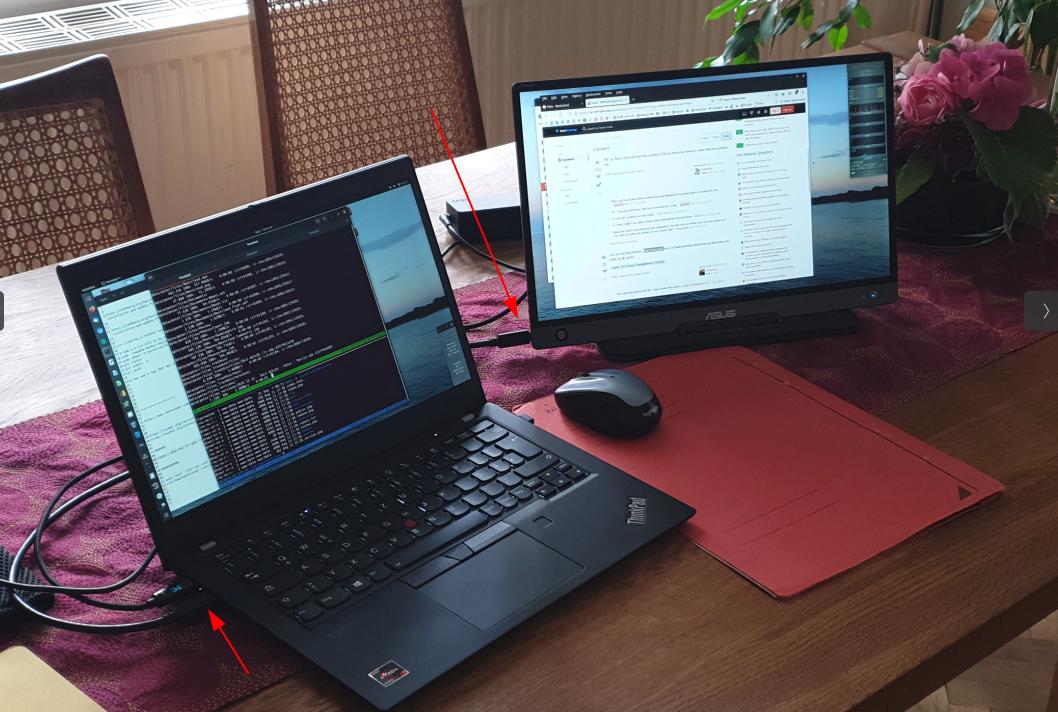
Four years ago, I bought a 15″ travel screen that connected over USB-3 to my notebook. A second screen while traveling was a dream come true. The slight disadvantages: The display link protocol ran on the CPU and hence the notebook’s fan was always running, and some parts of the Linux driver were not open source. Some time ago the LCD panel unfortunately broke in the suitcase so I was looking for a replacement. And it looks like things have progressed in the last years as there are now much better options!
Continue reading Driverless USB and HDMI Travel ScreenA Ethernet to USB Adapter on Android
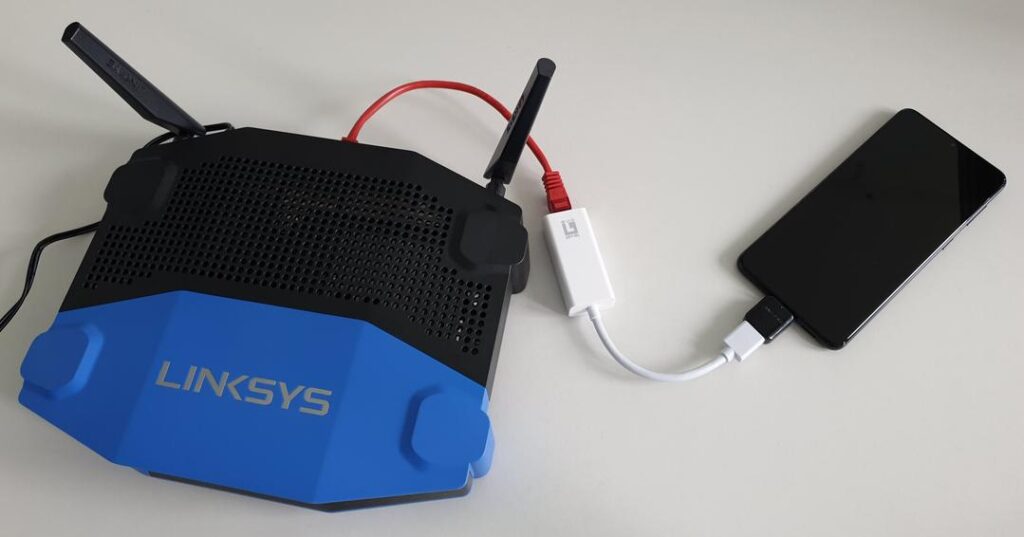
Just out of pure fun and interest I wondered recently if I could actually connect a Ethernet to USB adapter to an Android phone and then use the Ethernet port for Internet connectivity for another device, e.g. for an OpenWRT router. And indeed, this actually works as shown in the image above. This way, no USB tethering as described in the previous post would be necessary. If it wasn’t for a small detail: Since the USB port of the smartphone is now used by the Ethernet adapter, the phone can’t be charged anymore. O.k., wireless charging would be an option but that kind of ruins the elegance of the solution. So I’ll just stick with direct USB tethering to the OpenWRT router.
OpenWRT and Android USB Tethering For Backhaul
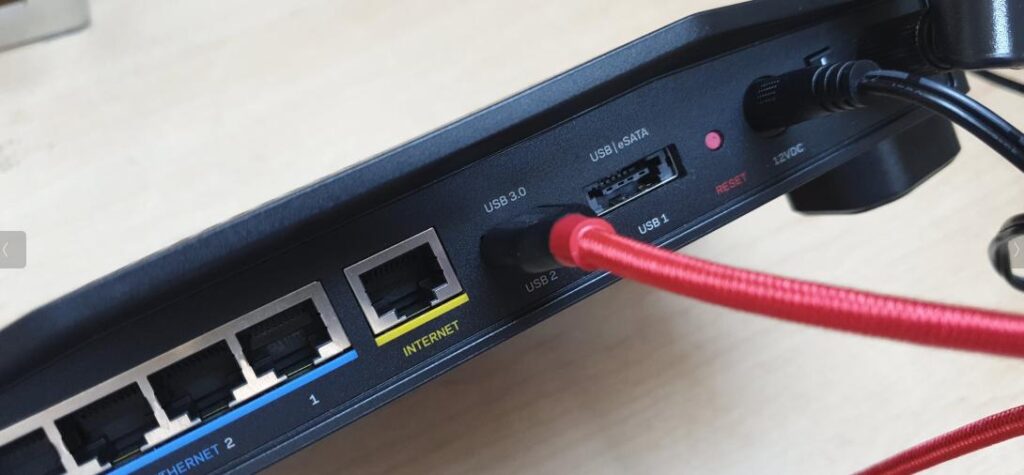
When traveling, I use Wi-Fi tethering with a smartphone a lot to keep my notebook and other devices connected. When staying at a place for more than just a day or two, however, I prefer a somewhat more sophisticated setup with a Linksys router running OpenWRT.
No, this is not just a fancy but often a must. For one thing, a dedicated router with good antennas results in a much better Wi-Fi range on both the 2.4 and 5 GHz bands and both bands can be used simultaneously. Also, I can make use of sophisticated features such as traffic shaping to keep round trip delays to a minimum. This is particularly important when uploading large amounts of data while doing attending conference calls.
Continue reading OpenWRT and Android USB Tethering For Backhaul